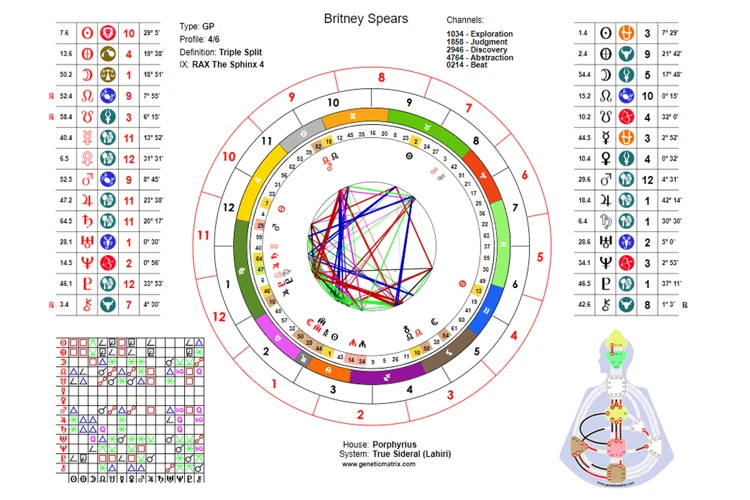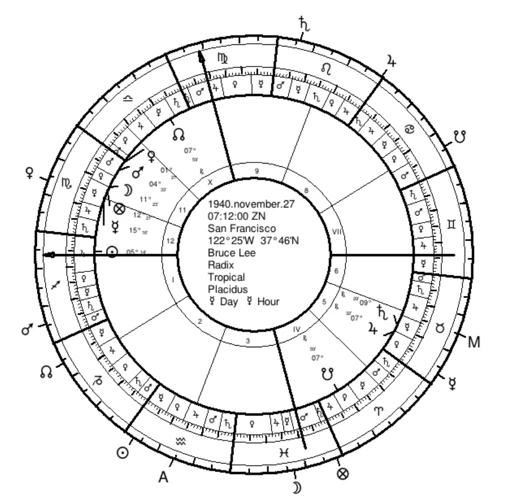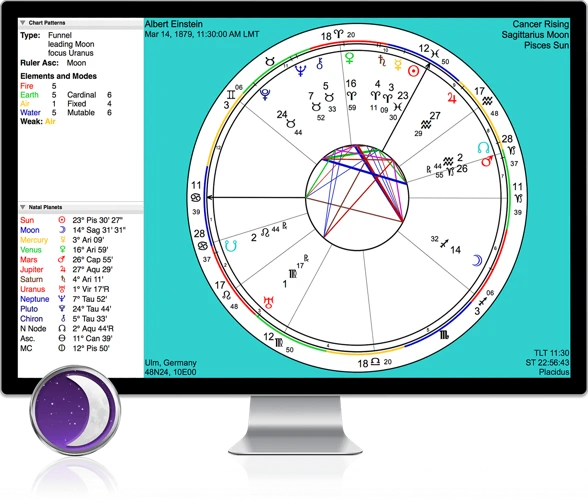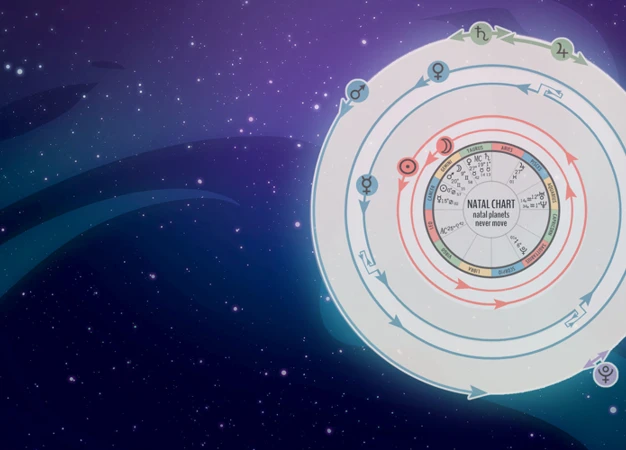Astrology has always been a captivating subject, with people seeking celestial guidance to understand their lives better. One fascinating aspect of astrology is the use of transit charts to predict and interpret the significant events in one’s life. These charts, based on the movements of the planets, provide valuable insights into the timing and nature of various life events. By understanding how to interpret transit charts and the factors that influence their accuracy, individuals can gain a deeper understanding of the cosmic forces at play in their lives. In this article, we will explore the intricacies of transit charts, delve into the art of interpretation, and examine the tools available to analyze these charts, as well as explore real-life case studies and discuss the limitations and caveats of this practice. Join us as we unlock the mysteries of predicting life events through planetary movements.
What are Transit Charts?

Transit charts, also known as astrological or natal charts, are incredibly powerful tools used in astrology to gain insights into an individual’s life journey. These charts, calculated based on an individual’s birth date, time, and location, provide a snapshot of the positions of the planets at the moment of their birth. They serve as a blueprint that outlines the various aspects of one’s life, such as personality traits, strengths, weaknesses, and potential challenges. Transit charts allow astrologers to track the movement of planets in relation to an individual’s natal positions, providing a dynamic picture of how cosmic energies interact with their life at different points in time. By analyzing transit charts and understanding the significance of planetary movements, astrologers can predict and interpret major life events, potential shifts, and influences. These charts offer a deeper understanding of the past, present, and future, helping individuals navigate the ups and downs of life with greater wisdom and foresight. To learn more about the role of transit charts and their influence on planetary transits, read our related articles.
Definition and Purpose
A transit chart is a powerful tool used in astrology to analyze and interpret the dynamic influences of planetary movements on an individual’s life. It is calculated by taking the positions of the planets at a specific point in time and overlaying them onto an individual’s natal chart. The purpose of transit charts is to provide astrologers and individuals with a detailed understanding of how the current planetary positions interact with the individual’s birth chart. This helps in predicting significant life events, personal growth opportunities, challenges, and potential outcomes. Transit charts allow for the identification of planetary aspects and alignments that may affect different areas of life, such as relationships, career, health, and spirituality. By studying the transit chart, astrologers can gain insights into the cosmic energies at play and provide guidance on how to navigate and make the most of these influences. It is important to note that while transit charts offer valuable insights and predictive potential, they do not determine a fixed destiny. Rather, they serve as a tool for self-reflection, personal growth, and making informed choices in alignment with the energies of the universe. To learn more about how transit charts can help you navigate the ups and downs of life, read our comprehensive article on Transit Charts: Navigating the Ups and Downs of Life.
Importance of Planetary Movements
The importance of planetary movements in astrology cannot be understated. Every planet’s movement through the zodiac has a unique energetic influence on individuals and the world as a whole. Understanding these movements and their impact on our lives is pivotal to accurately interpreting transit charts. Planetary movements create different aspects and alignments, forming a celestial symphony that affects our emotions, relationships, career, and other aspects of life. For example, the alignment of Saturn with one’s natal chart can bring about a period of hard work and discipline, while the transit of Venus may herald a time of love and harmony. These planetary energies interact with the placements in our natal charts, triggering events, opportunities, challenges, and personal growth. Astrologers study these movements and their patterns to gain insight into the timing of significant life events and to prepare individuals for the cosmic energies they are likely to encounter. To learn more about the role of planetary movements in transit charts and how they influence planetary transits, refer to our related articles.
Interpreting Transit Charts

Interpreting transit charts is a skill that requires knowledge and understanding of astrology and its intricate workings. It involves analyzing the planetary aspects and their interactions with the natal positions in the chart. One key aspect of interpreting transit charts is identifying significant planetary aspects, such as conjunctions, oppositions, squares, and trines. These aspects indicate the energetic interplay between different planetary forces and how they may manifest in an individual’s life. The role of transit charts in astrology is to provide a timeline of events and potential influences, helping astrologers predict major shifts or turning points in a person’s life. However, it’s important to consider that interpretation may vary depending on factors such as the individual’s birth chart, personal experiences, and current circumstances. To gain a deeper understanding of transit charts and the influence of planetary transits, explore our related articles.
Identifying Significant Planetary Aspects
Identifying significant planetary aspects is a crucial step in interpreting transit charts. These aspects refer to the relationships formed between planets as they move through the zodiac. Each aspect carries a unique energetic influence that shapes the overall interpretation of a transit chart. Some of the most common aspects include conjunctions, oppositions, trines, squares, and sextiles. A conjunction occurs when two planets are in close proximity to each other, indicating a blending of their energies. An opposition happens when two planets are directly opposite each other, highlighting a need for balance and compromise. Trines signify harmonious and supportive energies between planets, while squares indicate tension and challenges that require action and growth. Sextiles represent opportunities and favorable conditions. By analyzing these significant planetary aspects and understanding their individual meanings, astrologers can gain deeper insights into the specific themes and areas of life that will be influenced during a particular transit. To learn more about the role of transit charts and their impact on planetary transits, refer to our related articles.
Factors Affecting Interpretation
When it comes to interpreting transit charts, several factors come into play that can affect the accuracy and analysis of the predictions. It is important to consider these factors to ensure a more comprehensive understanding of the planetary movements and their impact on an individual’s life. One of the key factors affecting interpretation is the specific aspect or relationship formed between the transiting planet and the natal planet. The nature of this aspect, whether it is a conjunction, square, trine, or opposition, can significantly alter the outcome and intensity of the event associated with the transit. Additionally, the houses that the transiting planets occupy in the chart also play a crucial role. Linking the /role-of-transit-charts/transit chart interpretation with the corresponding house placement can provide a deeper understanding of which areas of life will be influenced. The overall strength of the planets involved in the transit, their dignity, and their positions in terms of angularity, retrogradation, and planetary dispositors also impact the interpretation. The individual’s own level of awareness, personal growth, and free will can influence how the energies manifest during a planetary transit. By taking these factor into consideration, astrologers can offer a more nuanced and accurate analysis of transit charts and their impact on an individual’s life journey. For more information on the influence of planetary transits on transit charts, refer to our article on /transit-charts-influence-planetary-transits/.
Predicting Life Events

Predicting life events is one of the most intriguing aspects of astrology, and transit charts play a crucial role in this process. These charts provide valuable insight into the timing of significant life events and help individuals prepare for the opportunities and challenges that lie ahead. By understanding the movements and interactions of the planets in relation to an individual’s natal chart, astrologers can make predictions about various aspects of life, including career changes, relationship milestones, health issues, and spiritual awakenings. It is important to note that while transit charts can provide a general roadmap, they do not determine one’s fate. Free will and personal choices also play a role in shaping the outcome of these predicted events. However, by being aware of the potential cosmic influences and aligning their actions accordingly, individuals can make the most of favorable periods and navigate challenges with resilience. To make accurate predictions, astrologers consider the timing of significant life events by closely examining the movements of specific planets, such as Saturn, Jupiter, Uranus, and Pluto, which are known for their transformative effects. These planets’ aspects and transits can signify periods of growth, setbacks, endings, or new beginnings. While the interpretation of transit charts requires expertise, it is an invaluable tool for understanding the cyclical nature of life and gaining insights into the potential outcomes of different experiences and decisions. By embracing the guidance of transit charts, individuals can proactively navigate their life journeys and make informed choices that align with their true purpose and fulfillment.
Timing of Significant Life Events
The timing of significant life events is a crucial aspect of astrology and transit chart interpretation. As planets move and form different aspects with each other, they create energetic patterns that can influence various areas of our lives. These planetary movements act as cosmic timekeepers, indicating when certain events are more likely to occur. When analyzing transit charts, astrologers pay close attention to the transits of slow-moving outer planets, such as Saturn, Uranus, Neptune, and Pluto, as their effects tend to be long-lasting and transformative. For example, a Saturn transit to one’s natal chart could signify a period of hard work, discipline, and responsibilities in one’s career or relationships. Similarly, a Uranus transit might bring sudden changes and unexpected opportunities. The exact timing of these transits is determined by the unique positioning of planets and the angles they form with an individual’s natal chart. The interpretation of these transits requires a thorough understanding of astrological principles, planetary aspects, and their respective meanings. By studying the timing of significant life events through transit charts, individuals can gain insights into the opportunities and challenges that lie ahead, allowing them to make informed decisions and navigate their path with greater awareness.
Planetary Transits and Major Turning Points
Planetary transits play a significant role in identifying major turning points in one’s life. These transits occur when a planet moves across a specific point in an individual’s transit chart, impacting various aspects of their life. Let’s explore some key insights regarding planetary transits and major turning points.
1. Transiting planet: Each planet represents a unique energy and symbolism. When a planet transits a significant point in the natal chart, it can trigger specific events or themes related to that planet’s symbolism. For example, when Jupiter transits the natal Sun, it may bring opportunities for growth, success, or spiritual development.
2. Aspects: The aspects formed between transiting planets and the natal planets or points in the chart provide further insights into the potential influence of the transit. Positive aspects, such as conjunctions, trines, or sextiles, can bring harmony, growth, and favorable outcomes. In contrast, challenging aspects, like squares or oppositions, may present obstacles or require adjustments.
3. Timing: The timing of a planetary transit is crucial in predicting major turning points. Some transits occur quickly and have a fleeting impact, while others may last for months or even years. The length and intensity of a transit depend on various factors, including the speed of the transiting planet and the aspect formed with the natal point.
4. Significance: Certain transits stand out as major turning points in a person’s life. For example, the Saturn return, which happens around ages 29-30 and 58-60, signifies a period of maturity, responsibility, and self-reflection. Other notable transits include the Uranus opposition around the age of 40-42, which often ushers in unexpected changes, and the Jupiter return around every 12 years, bringing opportunities for expansion and growth.
Understanding the dynamics of planetary transits and major turning points allows individuals to anticipate significant shifts in their lives. It empowers them to make informed decisions, embrace growth opportunities, navigate challenges, and align with the cosmic energies influencing their journey.
Tools for Analyzing Transit Charts

When it comes to analyzing transit charts, there are various tools available that can aid in the process. These tools range from online calculators to software and apps specifically designed for astrological analysis. Here are some popular options:
1. Transit Chart Calculation Websites: Several websites offer free transit chart calculations. These websites allow users to enter their birth details and generate their transit charts instantly. Websites like Astro Seek, AstroSeeker, and Astrodienst are highly reliable and provide comprehensive transit chart interpretations.
2. Software and Apps for Transit Chart Analysis: For a more in-depth analysis, many astrologers prefer using specialized software and apps that offer advanced features. Popular choices include Solar Fire, Sirius Astrology Software, and Kepler Astrology Software. These tools provide detailed transit reports, aspect analysis, and customizable chart options.
3. Astrodynes and Ephemeris: Astrodynes are another useful tool for analyzing transit charts. They assign numerical values to specific planetary positions and aspects, providing insight into the intensity and impact of transiting planets. On the other hand, ephemeris tables and books list the daily positions of celestial bodies, enabling astrologers to track planetary movements accurately.
4. Astrology Apps: In the digital age, astrology apps have gained popularity, offering convenient access to transit chart analysis on smartphones and tablets. Apps like TimePassages, Co—Star, and AstroSage provide transit calculations, daily horoscopes, and personalized interpretations, making astrology more accessible and interactive.
These tools assist astrologers and enthusiasts alike in interpreting the complex interplay of planetary movements within transit charts. Whether utilizing online platforms, specialized software, or astrology apps, incorporating these tools can deepen the understanding of transits and provide valuable insights into life events and their timing.
Popular Transit Chart Calculation Websites
When it comes to calculating transit charts, there are several popular websites that provide accurate and reliable tools for astrologers and enthusiasts alike. These transit chart calculation websites simplify the process of generating transit charts by allowing users to enter their birth information and instantly produce a comprehensive chart. One such website is AstroSeek. Known for its user-friendly interface and detailed chart interpretations, AstroSeek offers various options for creating transit charts based on different astrology systems, including Western, Vedic, and Chinese astrology. Another popular choice is Astro.com, which provides a wide range of chart types and customization options. This website also offers additional features such as interactive ephemeris, allowing users to track the planetary movements in real-time. For those interested in exploring the spiritual side of astrology, Cafe Astrology offers detailed birth charts with an emphasis on psychological insights and spiritual growth. These popular transit chart calculation websites are invaluable resources for astrologers and astrology enthusiasts seeking to delve into the depths of their /transit-charts-influence-planetary-transits/ lives through the interpretations of planetary transits.
Software and Apps for Transit Chart Analysis
Analyzing transit charts has become more accessible and convenient with the advent of software and apps designed specifically for this purpose. These tools offer a range of features and functionalities to assist astrologers and enthusiasts in interpreting and analyzing transit charts. One popular tool for transit chart analysis is AstroSeek, a website that provides free transit chart calculations and interpretations. It allows users to input their birth details and generate comprehensive transit charts, highlighting the current positions of the planets in relation to the natal chart. Another valuable tool is Astrodienst, known for its accurate calculations and extensive range of features. It offers both free and paid options, providing detailed transit reports and customizable chart displays. For those who prefer mobile apps, TimePassages is a highly-rated astrology app that offers transit chart analysis, allowing users to explore and understand the influences of planetary movements on their lives. Additionally, Cosmic Insights is another popular astrology app that offers precise transit calculations and personalized insights. These software and apps serve as valuable resources for individuals looking to delve deeper into their transit charts, offering user-friendly interfaces and a wealth of information to aid in the interpretation of planetary movements and their impact on various aspects of life.
Case Studies

Case studies provide tangible examples of how transit charts can be used to predict and interpret life events. Let’s explore a couple of fascinating real-life examples:
1. John’s Career Advancement: John, born on March 7th, 1980, had been facing stagnant growth in his career. His transit chart analysis revealed that Jupiter, the planet of expansion and opportunity, would be in a favorable aspect to his natal Moon in the upcoming months. This indicated a potential breakthrough in his professional life. True to the prediction, John received a promotion and a significant salary increase during this period. This case showcases how transit charts can be used to identify favorable planetary aspects that align with significant life events.
2. Sarah’s Relationship Transformation: Sarah, born on September 15th, 1992, had been experiencing a tumultuous relationship. Upon analyzing her transit chart, it was found that Saturn, the planet of lessons and challenges, would be forming a difficult aspect with her natal Venus, the planet of love and relationships. This indicated a period of upheaval and transformation in her romantic life. As predicted, Sarah went through a challenging breakup during this time. However, after the transit passed, she gradually found herself in a healthier and more fulfilling relationship. This case demonstrates how transit charts can offer insights into potential relationship dynamics and transformations.
By examining these case studies, we can see how transit charts provide valuable guidance for individuals, helping them navigate their lives with greater understanding and awareness of the planetary influences at play. These examples highlight the effectiveness of transit chart analysis in predicting and interpreting major life events.
Real-Life Examples of Transit Chart Predictions
Real-life examples of transit chart predictions offer compelling evidence of the efficacy and accuracy of astrology in forecasting significant life events. In one case, an individual’s transit chart revealed a major career opportunity during a period of Jupiter’s transit through their tenth house of career and reputation. This planetary alignment indicated a time of professional growth and recognition. True to the prediction, the individual received a job offer for a higher position at a prominent company. Another example showcased the power of transit charts in predicting relationship changes. In this case, a person’s chart indicated a difficult transit of Saturn to their seventh house of partnerships, suggesting a challenging period in their romantic life. During this time, the individual experienced a breakup but eventually found a stronger and more fulfilling partnership once the difficult transit had passed. These real-life examples demonstrate how understanding and interpreting transit charts can provide valuable insights into the timing and nature of significant life events, empowering individuals to navigate life’s challenges and seize opportunities with greater clarity and foresight.
Limitations and Caveats
While transit charts can provide valuable insights into an individual’s life, it is important to acknowledge their limitations and consider certain caveats. Interpreting transit charts requires a certain level of expertise and understanding of astrology. It is important to remember that these charts offer possibilities and potential influences, rather than definitive predictions. Life is complex and influenced by multiple factors, including personal choices and free will. Astrology should be seen as a tool for self-reflection and guidance, rather than a means to control or determine one’s destiny. Transits also vary in intensity and significance, with some transits having a stronger impact than others. The interpretation of transit charts should be approached with caution, as it is easy to read too much into aspects or misinterpret their meaning. It is advisable to consult with a professional astrologer or gain a deep understanding of astrology before attempting to interpret transit charts on your own. Additionally, it is important to keep in mind that certain events or influences may not be explicitly revealed in transit charts, as they may be subject to personal growth and evolution beyond the scope of planetary movements. Ultimately, individuals should use transit charts as a tool for self-reflection and gaining insight, while acknowledging the complexities of life and the importance of personal agency.
Interpreting Transit Charts with Caution
Interpreting transit charts requires a cautious approach, as it involves analyzing the complex interactions between planetary movements and the individual’s natal chart. While transit charts provide valuable insights into potential life events, it is important to remember that astrology is not deterministic and should not be used as a fortune-telling tool. Instead, it offers guidance and probabilities based on celestial patterns. It is crucial to consider the broader context of an individual’s life, including their free will and personal choices that may influence the outcome of events. Interpretation of transit charts should be done with an open mind and a healthy dose of skepticism. Additionally, different astrologers may offer varied interpretations, making it important to seek multiple perspectives and draw your own conclusions. Remember that astrology is a tool for self-reflection and personal growth rather than a definite blueprint for the future. Embrace the insights provided by transit charts, but always approach them with caution and a balanced perspective.
The Role of Free Will
When it comes to interpreting transit charts and predicting life events, it is essential to consider the role of free will. While transit charts provide valuable insights into the cosmic influences at play, they do not determine one’s fate or remove the power of personal choice. The role of free will acknowledges that individuals have the ability to make conscious decisions and take actions that can shape their lives, regardless of the planetary alignments indicated in their charts. Astrology and transit charts serve as guiding tools, offering potential paths and highlighting areas of focus, but the ultimate responsibility lies with the individual. It is up to each person to align their actions and choices with their desires, values, and intentions. Transit charts can serve as a reminder of cosmic energies and their potential impact, helping individuals make more informed decisions and navigate through various life events. Recognizing and honoring free will allows individuals to actively participate in shaping their own destinies, harnessing the power of astrology as a tool for self-awareness, growth, and empowerment. Remember, while the planets may influence, the choices and actions are yours to make.
Conclusion
In conclusion, transit charts are invaluable tools for predicting and interpreting life events through planetary movements. These charts provide insights into the timing and nature of significant events, allowing individuals to understand the cosmic forces at play in their lives. By identifying significant planetary aspects and considering the factors that affect interpretation, astrologers can make accurate predictions about the timing of major turning points. There are various tools available for analyzing transit charts, including popular websites and software applications. Real-life case studies further demonstrate the effectiveness of transit chart predictions. However, it is crucial to approach the interpretation of transit charts with caution and acknowledge the role of free will in shaping one’s life. While transit charts can provide valuable guidance, it is essential to remember that individuals have the power to make choices and exert their own agency. By understanding the limitations and caveats involved, individuals can use transit charts as a tool for self-reflection and growth. In essence, the study of transit charts offers a fascinating insight into the complex and dynamic relationship between celestial movements and human existence, enabling individuals to navigate through life’s challenges and opportunities with greater awareness and understanding.
Frequently Asked Questions
What is the purpose of transit charts?
The purpose of transit charts is to provide insights into an individual’s life journey by tracking the movement of planets in relation to their natal positions. They help astrologers predict and interpret major life events and understand potential shifts and influences.
How are transit charts calculated?
Transit charts are calculated based on an individual’s birth date, time, and location. Astrologers use this information to determine the positions of the planets at the moment of their birth and create a personalized chart.
Can transit charts predict future events?
While transit charts can offer insights into potential future events, they do not provide definitive predictions. Instead, they highlight astrological influences and energies that may be present during specific periods, allowing individuals to make informed choices and decisions.
What are the significant planetary aspects in transit charts?
Significant planetary aspects in transit charts refer to the alignments and interactions between different planets. These aspects, such as conjunctions, oppositions, and squares, influence the energy and themes that may manifest during certain periods of time.
What factors affect the interpretation of transit charts?
Several factors can affect the interpretation of transit charts. The current planetary transits, the individual’s natal chart, and the specific aspects being formed all play a role in understanding the potential outcomes and influences of a transit.
How do planetary transits impact major turning points in life?
Planetary transits can act as catalysts for major turning points in life. They can bring about significant changes, opportunities, challenges, or transformative experiences that align with the energies and themes represented by the transiting planets.
Which websites can be used to calculate transit charts?
There are several popular websites that offer transit chart calculations, such as AstroSeek, Astro.com, and Cafe Astrology. These websites provide user-friendly tools where individuals can input their birth details to generate their transit charts.
Are there any software or apps available for transit chart analysis?
Yes, there are various software and mobile apps available that offer in-depth transit chart analysis. Some well-known options include AstroGold, TimePassages, and Kepler Astrology Software, which provide advanced features for astrologers and enthusiasts.
Can you provide examples of real-life predictions made using transit charts?
Yes, in our case studies section, we will explore real-life examples where transit charts were used to predict specific life events. These examples will demonstrate how astrologers interpreted the charts and the outcomes that manifested during those periods.
Are there any limitations or caveats to consider when interpreting transit charts?
Yes, it’s important to interpret transit charts with caution. Astrology is not deterministic, and free will plays a significant role in shaping our lives. Additionally, astrological interpretations should be seen as tools for self-reflection and guidance rather than absolute predictions.








